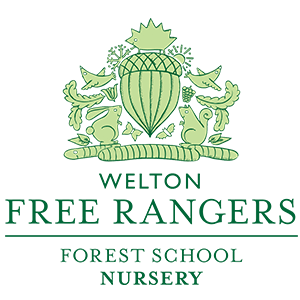It's a thought poking question, especially if you ask a 4 year old whether they think they are? Gladly the majority said yes. Some however, decided they weren't...
The Forest School focus for that week found the children looking for bugs. Its stemmed from the children's interest in the bugs homes during our building sessions. The Ant's nest in particular was of reverence to the groups, as we discussed how copious tiny little creatures manage to build such huge nests, using only their little mandibles, and lots of cooperation and teamwork. Many mandibles make lighter work. The mysterious world of creepy crawlies offer the children a never ending source of intrigue. For example, being able to show a two-toned woodlice that's just moulted half its outer casing is something they will rarely see, so moments like this are very special. Their miniature and busy lives can easily captivate a child's imagination and lead them on a path of discovery, making for an incredibly rewarding learning experience, especially if the child isn't too keen on the creeping for crawlies (or indeed crawling for creepies!)
This particular week, we gave emphasis to safe handling. With the best intentions, children eager to hold a woodlice, can often be somewhat heavy handed in their approach to picking the poor little critters up. We introduced the children to life processes and how we can tell if something is alive or dead. It came in very handy! I posed a question: "who thinks they are alive" and waited for a 100% hands up response. I think I got closer to 85-90% positive feedback on that, so I followed up with "how do you know you're alive?" This was where we introduced the 7 life processes and we looked to see if we could agree on some of them. Most replied with "I can move!" or "I can see you!" which are all good examples of the life processes: Movement, Respiration, Sensitivity, Nutrition, Excretion (they enjoyed talking about that one), Reproduction and Growth. I steered away from asking if the children thought they could 'reproduce'... (sorry parents! That one's for you!) Next, I asked: "who thought bugs were important?" and "who thinks they are alive too?" These questions proved to offer some rather intellectual insight in each child's view of the world, their place in it, and how they feel about the world around them.
Then we introduced the children to a different method of capture using brushes and small pots. This way the children could gently move any critter that caught their attention without harm...in theory. Most did excellently at this quite dexterously tasked challenge, as it involves thinking carefully about the where the pot needs to be in relation to the bug, made even more tricky as the bug in questions usually are scuttling away to cover, and are also prone to fall under the remit of gravity. Easy for us adults to workout but, mega tricky for a 3 year old still trying to figure out their fine motor skills!
As always our searches were very fruitful, with the children scouring both in the lengthy Cow Parsley, under logs, in the pond, under bark, under our reptile refuge and in the flowers. Woodlice, snails, slugs, toads, frogs, slow worms, ants, bees, wasps, flies, newts, larvae, tadpoles, freshwater shrimp, spider mites, centipedes and millipedes were all uncovered, collected and compared. "Are they alive? How many legs do they have? Can they fly? What do they eat? Why does it live here? Why is it slimy?" all made good questions to further the children's learning. Such a rich environment allows us to really open the child's minds up to how vast and varied the world is beneath their feet, but also how fragile it can be, and how as custodians, we must look after and care for it as best we can. It's only borrowed after all, never truly 'owned'. We are but caretakers until it gets past on to someone else.
Such an enjoyable week I'm sure you'll agree. Thanks loads for reading.






































